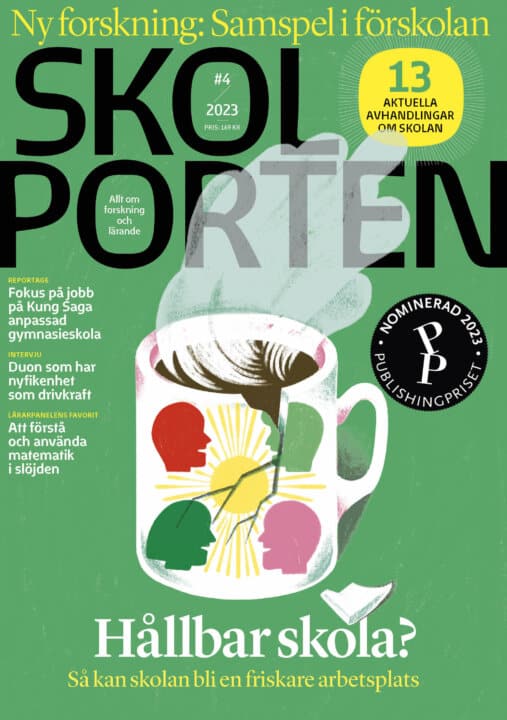Nära gränsen: diskursiv, könad och förkroppsligad stress hos dagens ungdomar
Maria Wiklund
Docent Ann Öhman, lektor Eva-Britt Malmgren-Olsson, docent Carita Bengs, professor Erik Bergström
Professor Charli Eriksson
Umeå universitet
2010-11-12
Nära gränsen: diskursiv, könad och förkroppsligad stress hos dagens ungdomar
Close to the edge: discursive, gendered and embodied stress in modern youth
Institutionen för folkhälsa och klinisk medicin, epidemiologi och global hälsa, Institutionen för samhällsmedicin och rehabilitering
Nära gränsen: diskursiv, könad och förkroppsligad stress hos dagens ungdomar
Under det senaste decenniet har medier och flertalet nationella forskningsrapporter informerat om ökande psykisk ohälsa och stress bland barn och unga i Sverige. Denna avhandlings syfte är att med hjälp av en utforskande och tvärvetenskaplig ansats fördjupa förståelsen av subjektiva ohälsoproblem och upplevd stress bland unga i Sverige, med speciellt fokus på flickors och unga kvinnors upplevda stressproblem. Avhandlingen har en explorativ och flexibel studiedesign som kombinerar kvalitativa och kvantitativa forskningsmetoder med särskild tyngdpunkt på de kvalitativa metoderna. Datainsamling har genomförts med a) kvalitativa forskningsintervjuer med en grupp flickor och unga kvinnor (16-25 år) som sökt hjälp för stressrelaterade problem på en ungdomshälsomottagning i Umeå, och b) en skolbaserad enkätundersökning med totalt 1027 pojkar och flickor, 16-18 år, i åk 1-2 på tre kommunala gymnasieskolor i Umeå. Forskningsintervjuerna har huvudsakligen analyserats med kvalitativ innehållsanalys. Innehållsanalysen har i de olika delarbetena sedan kombinerats med diskursorienterad analys (Artikel I), med fenomenologisk ansats (Artikel II) och med narrativ metod (Artikel III). Skolenkäten har analyserats med deskriptiva och analytiska statistiska metoder (Artikel IV). Resultaten från den kvalitativa intervjuundersökningen med unga kvinnor belyser a) multipla stressorer som kan hänföras till flera parallella områden i livet – men även till samhälleliga diskurser: modernitetens stressorer, genusordningarnas stressorer och ungdoms-årens stressorer, b) multidimensionella, levda och förkroppsligade erfarenheter av stress och att leva på gränsen som innefattar fysiska, emotionella, kognitiva, sociala och existentiella dimensioner och c) erfarenheter av våld och kontroll i partnerrelationer samt deras konsekvenser. Resultaten från enkätundersökningen med gymnasielever visar att en stor andel av ungdomarna rapporterar subjektiva hälso- och stressbesvär av olika slag inklusive oro och ångest. Jämfört med pojkarna så är det två till tre gånger fler flickor som rapporterar besvär och denna skillnad är signifikant. En majoritet av ungdomarna håller ett högt tempo och upplever sig också pressade av krav från skolan samt av egna inre krav. Upplevelserna av stress i form av högt tempo och höga krav korrelerar med de subjektiva hälso- och stressbesvären samt med ångest. Sammanfattningsvis visar avhandlingen att ungas stressrelaterade och subjektiva hälsobesvär bör förstås i ett vidare socialt sammanhang som inkluderar ett genusperspektiv. Kontext- och genusspecifika interventionsmodeller behöver utvecklas för att möta dessa hälsoproblem, men stress bland unga behöver också diskuteras och studeras vidare i relation till hur samhällsutvecklingen och dess värdegrunder påverkar unga av idag.
Close to the edge: discursive, gendered and embodied stress in modern youth
Background Adolescent subjective health and mental problems have become a public health concern not only in Sweden but worldwide. The overall aim of this thesis is to deepen and widen the understanding of young peoples subjective health, psychosomatic and stress-related problems. A special focus is put on experienced stress among adolescent girls and young women. The study setting is one youth health centre, and three upper secondary schools in Umeå, a university town in northern Sweden. The research design combines qualitative and quantitative methods with the main focus on qualitative methods. An interdisciplinary theoretical synthesis is utilised, primarily based on bio-psycho-social, phenomenological, and social constructionist approaches.The three qualitative papers (I-III) are based on the same sample of 40 young women who had sought help at the youth health centre because of their stress-related problems. Paper I explores the stressors experienced by the young women, whereas Paper II explores the lived experiences of stress. Paper III examines the young women s experiences of living in a violent partner relationship as young teenagers, and how this has affected their lives and health over time. Paper IV investigates perceived stress and subjective health complaints among older adolescents in upper secondary school. Methods Data was derived from: a) a qualitative interview study with 40 adolescent girls and young women, aged between 16 25 years, who had sought help at the youth health centre for stress problems. Qualitative content analysis was used in combination with discourse-orientated analysis (Paper I); a phenomenological approach (Paper II), and narrative method (Paper III); b) a school-based survey with a sample of 16 18-year-old boys and girls (n=1027), in upper secondary school, grades 1 and 2, from different educational programs at three schools. Perceived stress, self-rated health, subjective health complaints, anxiety, and depression, were measured with a questionnaire including a set of instruments. Statistical analyses were descriptive and analytical. Results Paper I identified multiple stressors of modernity, gender orders and youth. Contextual factors, including social constructions and practices of gender, played an important role for the stress experienced by these young women. The results revealed that multiple and intersecting stressors and demands connected to essential life spheres, contributed not only to experiences of distress but also to feelings of constraint. Moreover, the roles of excessive taking of responsibility and failing adult support were revealed.Paper II illuminated multidimensional lived and embodied experiences of distress. Living close to the edge emerged as the common theme running through all of the interviews and captured the young women s sometimes unbearable situations. The theme contains dimensions of physical, emotional, cognitive, social, and existential distress, as well as dimensions of distrust and disempowerment.Paper III examined two Swedish adolescent girls experiences of living in a violent relationship as teenagers, and how this has affected their lives and health over time. The analysis revealed violation, stress, trauma, coping, and agency during adolescence and the transition into adulthood.Paper IV showed a high level of perceived stress, and subjective health and stress complaints among boys and girls. High pressure and excessive demands from school were experienced by a majority of boys and girls. Perceived stress was correlated with subjective health and stress complaints and anxiety. There was a clear gender difference: two to three times as many girls than boys reported subjective health complaints, e.g. headaches, tiredness and sleeping difficulties, musculoskeletal pain, sadness and anxiety. Conclusion Several issues of relevance to public health were raised throughout the thesis. According to the interview results, the young women face multiple and intersecting stressors of modernity, gender orders and being young, which correspond to their multidimensional experiences of living close to the edge . Their experiences of stress are multidimensional, and include physical, emotional, cognitive, social and existential dimensions. Findings from the qualitative study were also mirrored in the findings from the larger group of adolescents in the school survey, where a high proportion of older adolescents, particularly girls, reported perceptions of stress. Moreover, perceived stress correlated to a variety of subjective health complaints and anxiety. The results can be understood and explained from a variety of perspectives. The experience of managing alone indicated perceptions of inadequate social support. The overall results indicated a risk of more negative health development, particularly among adolescent girls and young women. Stressors of modernity, gender orders and youth were prominent. The continuation and normalisation of oppression and violence are also discussed as a severe gendered stressor in young women s lives. This calls for a broad contextualised and gender-sensitive approach to young people s stress and health problems. In conclusion, the age and gender gap in adolescent health needs to be further explored, and processes of distress, distrust and disempowerment have to be taken more seriously.
Relaterade länkar

Biologi
 Åk 7–Vux
Åk 7–Vux Hållbar utveckling i förskolan
 Fsk
Fsk 




